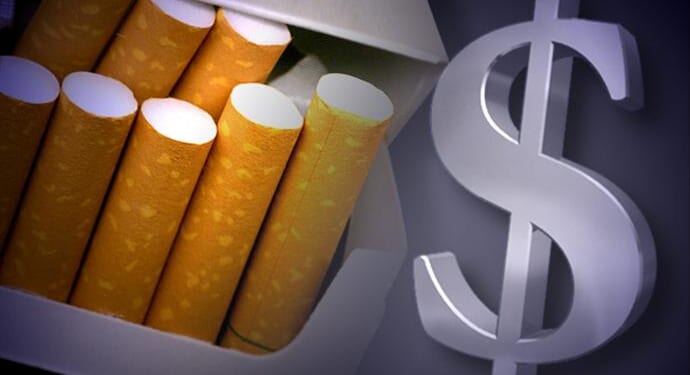Voters residing in a city home to more than 70 breweries, 2,000 liquor-licensed establishments, 300 cannabis dispensaries, and psychedelic mushroom clinics will soon decide if they’re willing to prevent consenting adults from purchasing at least one commonly used substance: flavored nicotine products.
As part of their 2025 ballots, Denver voters will be asked to weigh in on Referendum 310, a measure that gives the people of Colorado’s capital city the final say on whether the city council’s ordinance banning flavored nicotine sales in city limits should be allowed to stand.
The measure is being spearheaded by a coalition of small business interests (primarily vape shop and convenience store owners). They’re urging a “NO” vote to prevent the ordinance from taking effect.
On the other side is a coalition of anti-tobacco activists (including Michael Bloomberg) who helped get the council to ban flavored products in the first place. They urge a “YES” vote in the name of preventing youth access to certain products.
But while underage nicotine use is a problem worth addressing, supporters of a prohibition-first approach are missing the great strides already being made on the issue and risk doing more harm than good.
Searching for a problem
Though billed as a flavored “tobacco” ban, as proposed, the city’s policy would sweep in explicitly non-tobacco alternatives like e-cigarettes and nicotine pouches while leaving traditional cigarettes, cigars, and smokeless tobacco unencumbered.
The deleterious public health consequences of tobacco use are well known at this point, yet nicotine, while habit-forming, is not itself carcinogenic.
Alternative nicotine delivery systems like e-cigarettes and tobacco-free pouches show promise as harm-reduction tools for existing tobacco users, which the CDC estimates includes one in ten Colorado adults.
Public health entities like the FDA acknowledge a “continuum of risk” among nicotine products, and the agency has even approved several tobacco-free nicotine offerings in flavors like menthol and mint after determining they provided a net public health benefit.
Additionally, there exists a growing body of peer-reviewed evidence that adult e-cigarette users overwhelmingly prefer flavored products and that flavor availability is useful in helping them quit smoking.
Meanwhile, the problem the city council is purportedly trying to address is already well on its way to being solved. Youth vaping rates have already plummeted nearly five-fold from their 2019 peak to less than six percent today, according to data from the FDA. Less than two percent of all students report using any form of nicotine pouch, and fewer still report using any actual tobacco product, flavored or otherwise. In fact, teen cigarette use is currently at its lowest level ever recorded by the agency.
And though Colorado was once an outlier nationally for youth e-cigarette use, it has also seen a precipitous decline in recent years, according to the state’s Healthy Kids Colorado Survey. Furthermore, there’s little evidence that a flavor ban would do anything to dissuade ongoing illicit youth use. Among the single-digit percentage of Colorado minors who continue to report e-cigarette use, just 21 percent cite flavor availability as their reason for doing so, according to the same survey.
Existing evidence also suggests that such flavor bans could upend this progress. After San Francisco banned the sale of flavored nicotine products like vapes, a Yale School of Public Health study found high school students’ odds of smoking traditional unflavored (and carcinogenic) cigarettes doubled.
Prohibition fallout
In Massachusetts, the first jurisdiction to adopt a statewide flavored tobacco ban, the policy resulted in an immediate $125 million hit to the state’s annual tax revenue from declining in-state sales, which were almost entirely accounted for by increased sales in neighboring New Hampshire and Rhode Island. Meanwhile, state agents there continue to confront a thriving black market for smuggled and untaxed tobacco products and e-cigarettes.
It is easy to imagine a similar dynamic playing out in Denver. Many of the city’s current consumers could simply drive a few miles outside the city to make their purchases or have them brought in from those living in neighboring jurisdictions by residents capitalizing on a newly created secondhand market. In turn, both the city and its licensed business owners would lose out on millions in potential revenue.
To avoid this outcome, Denver policymakers should instead focus on continued youth education efforts and enforcement of age verification laws among retailers to prevent underage access to such products, all while allowing existing users of tobacco continued access to safer alternatives.
The alternative is a trajectory that would lead to a far more perverse situation than the status quo, one in which many non-carcinogenic products are outlawed while traditional, non-flavored cigarettes stay on the shelves.
Denver should heed the warnings of past policy failures related to alcohol and cannabis. Prohibition leads to illicit markets, encourages deadly substitution effects, and infringes on consumer freedom for little material public health benefit.
Restricting the ability of consenting adults to choose legal, potentially harm-reducing products in the name of protecting kids (who are already prohibited by law from purchasing them) reflects a failure of policy imagination. It fails on public health grounds, economic grounds, personal liberty grounds, and common-sense grounds.
This analysis was adapted from an article that originally appeared in Complete Colorado.










